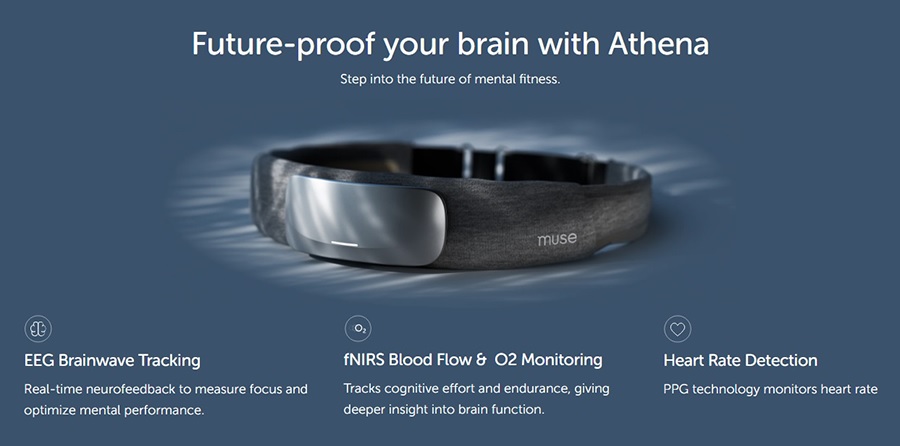
There is a moment, often somewhere between a school drop off and a late afternoon email, when the brain throws up a hand and says, please pick one thing. If that has started happening more often, you are not broken, you are human, and you are likely carrying far more than you realize. Attention feels different in midlife because life is different. Hormones shift, sleep gets chopped into smaller pieces, responsibilities pile up like laundry on the chair. The good news is that attention is trainable at every age. You do not need punishing boot camps for your brain. You need gentle, regular, and kind practice that respects your biology.
Here you see how breathing can nudge your heart rhythm into a calmer pattern, how neurofeedback and biofeedback can provide helpful mirrors, and how to set up your day so attention has a fair chance. We keep the science clear, the steps specific, and the bar low enough that progress feels possible. Think of it as strength training for attention, with more tea and fewer grimaces.
Contents
Why Attention Feels Different in Midlife
Attention is not a single switch. It is a team with different jobs. One part keeps you alert, another orients you to what matters, and a third part manages conflicts, like when your phone pings during a complex task. Researchers often call these the alerting, orienting, and executive control networks. They depend on healthy sleep, balanced neurotransmitters, and a body that is not constantly bracing for the next crisis. Midlife brings plenty of change to each of these foundations. Estrogen and testosterone ebb and flow, which nudges dopamine and acetylcholine. Sleep can become lighter or more fragmented. Stress climbs, sometimes quietly. Put those together and your attention team has more work and fewer resources.
Working memory is the whiteboard of the mind. In midlife the whiteboard is still present, it just fills faster when stress and tiredness are high. You may notice more tip of the tongue moments and more task switching that leaves you foggier. None of this means your brain is fading. It usually means capacity is being rented by too many tenants at once. The remedy is not to simply try harder. The remedy is to shape conditions so attention can do its job, and then to practice the skill of returning when it wanders. That is trainable.
There is also the social part. Many people in midlife act as family hubs, workplace leaders, and community problem solvers. Constant micro decisions burn glucose and patience. Add digital interruptions and you get an attention tax that compounds by lunch. Recognizing this is not an excuse, it is a strategy. If attention is a muscle, your daily routine is the gym. We will set up your gym in a way that fits real life, not fantasy life.
The three attention jobs to remember
- Get ready: the alerting system, your general readiness to respond.
- Point the beam: the orienting system, how you select a target and ignore the rest.
- Hold the line: executive control, how you manage conflict and stay on plan.
Friendly reminder: if you notice more mind wandering or irritability, check the basics first. Hunger, sleep debt, dehydration, and unprocessed stress often masquerade as poor attention.
Principles of Gentle Brain Fitness
Gentle does not mean passive. It means you respect recovery, build slowly, and favor consistency over heroic effort. The brain changes through repetition plus attention. That is neuroplasticity in action. Midlife brains change just fine when training is steady and the body is on board. Here are the principles that guide this program.
Frequency beats intensity
Five to seven short sessions per week, even ten minutes at a time, will beat one long marathon on Saturday. Attention thrives on reps. Each time you notice distraction and return, you wire the circuit a tiny bit stronger. Think sets and reps, not personal records. If you have a smartwatch or calendar, schedule brief focus sprints and treat them like any appointment you keep with respect.
Pair breath and posture with focus
Your nervous system feeds your attention systems. Slow, even breathing around five to six breaths per minute can support heart rate variability, which is a measure of how flexible the autonomic nervous system is. A tall, relaxed posture widens the visual field, which tends to reduce tunnel vision and urgency. Pairing two minutes of slow breathing and a posture reset with your focus block gives the brain a clear starting bell.
Rest is part of the workout
Muscles grow during rest. So does attention capacity. Very short breaks help maintain quality. A 25 minute focus sprint followed by a three to five minute reset is a workable baseline. During breaks, change the channel on your senses. Look far out a window, sip water, and stand up. Do not reach for your phone, that is a new task, not a rest. If you must check messages, do it in a dedicated admin block so your focus blocks keep their shape.
Start kind, stay kind
Self talk matters. If each lapse triggers a scolding, the body learns that focus equals threat. That is not good conditioning. Use the same tone you would use with a child learning to ride a bike. Notice wobble, guide the return, celebrate a few smooth pedals, then stop while it still feels good. The goal is a sustainable habit that your future self can continue without resentment.
Everyday Practices That Sharpen Focus
Here is a simple toolkit that fits into a busy life. You can start with one or two practices and add more as they become easy. Think of these as modular blocks that you can stack to build an attention friendly day.
Focus sprints with a warm up
- Two minute warm up: sit tall, soften your shoulders, and breathe in for a count of four, out for a count of six. Repeat ten times.
- Set your target: write the single action you will complete on a sticky note. Example, draft the first paragraph, reconcile three transactions, or outline three slides.
- 25 minute sprint: start a quiet timer. Put your phone in another room or into airplane mode. Close extra tabs. If you think of something unrelated, jot a one word cue on paper and return to the task.
- Three minute break: stand, stretch, sip water, and look far away. No scrolling.
Body anchors during mental work
- Breath pacing: try a 4, 2, 6 rhythm, in for four, pause for two, out for six. If you use a breathing app or watch, set the pace to about six breaths per minute.
- Hand awareness: lightly touch thumb to index finger and notice the sensation for two breaths. It is a simple, portable anchor that keeps a tiny part of attention in the body.
- Visual field softening: occasionally widen your gaze to include the edges of your vision. This reduces tunnel vision and tends to lower sympathetic arousal.
Movement snacks
Short bursts of movement improve blood flow and arousal regulation. Try 10 squats, a staircase lap, or a 60 second brisk walk between meetings. If you work from home, put a light kettlebell near your desk and do 10 slow deadlifts at lunch. If you have knee or back concerns, a gentle yoga pose or wall push ups can sub in. The point is to nudge circulation and wake up proprioception, not to set fitness records.
Monotasking rituals
Make starting easy with a small routine. Fill a glass of water, clear a 12 inch square on your desk, put on the same instrumental playlist, and open only the tools for the first task. Rituals teach the brain that this is the moment for one thing. If you share space with others, a visible cue helps. A small desk light on means you are in a 25 minute sprint. When the light is off, you are available again. Low drama boundaries are the most sustainable kind.
Pro tip: if coffee makes you jittery, try waiting 90 minutes after waking before your first cup. Alertness rises naturally as adenosine clears. The delay often reduces the afternoon crash and improves sleep that night.
Biofeedback and Neurofeedback: Practical Mirrors for Attention
Biofeedback gives you a live mirror of a body signal so you can learn to steer it. Heart rate variability biofeedback teaches you to breathe in a way that increases the healthy wiggle in the time between heartbeats. Temperature biofeedback teaches you to relax the hands and forearms. Neurofeedback is a cousin that uses brain signals, usually EEG or near infrared light, to coach steadier patterns of attention.
EEG, fNIRS, and what they can tell you
EEG measures electrical activity from the scalp. For attention training, a common approach is to reward steadier rhythms that relate to engagement while discouraging patterns linked to excessive drowsiness or rumination. For example, some programs aim to reduce excessive theta relative to beta during tasks, and to encourage calm alpha when resting. You do not need to chase perfect ratios. The point is to notice, coach, and practice.
fNIRS uses gentle light to gauge changes in oxygenated and deoxygenated hemoglobin in the cortex. In plainer terms, it can provide a window into blood oxygenation shifts that tend to climb with mental effort in some regions. During working memory work or sustained attention, you might see increases that reflect higher demand. Over time, people sometimes report that the same task feels easier as their system gets more efficient, which can show up as smaller swings.
At home tools and a neutral example
Several consumer options now let you practice with feedback without visiting a clinic. The Muse headband, is one example. It uses EEG sensors to give real time audio cues during meditation and attention exercises. People often use it to build a consistent practice, get basic session metrics, and notice which breathing pace or posture produces steadier patterns for them. It is not a medical device, and it does not diagnose anything, yet it can be a useful coach for routine and self awareness. If you already meditate, adding brief Muse sessions can make the habit more concrete, like having a metronome during piano practice.
Session structure
- Set a purpose: calm for sleep, steady alertness for work, or emotional balance after a tense meeting.
- Warm up: two minutes of slow breathing to settle the system.
- Feedback period: five to ten minutes with your tool of choice. Stay curious, not judgmental.
- Cool down: jot one sentence about what helped. A simple log builds pattern recognition.

